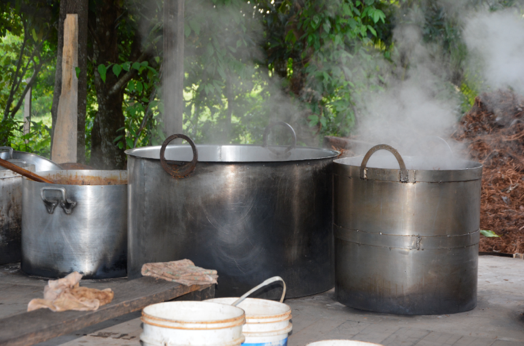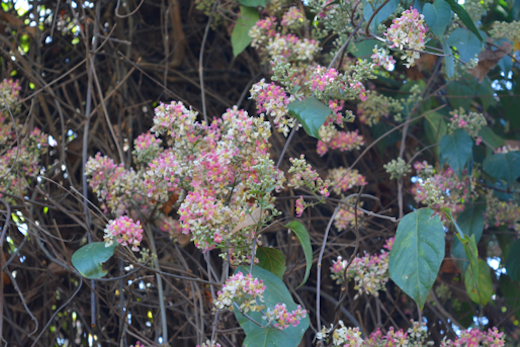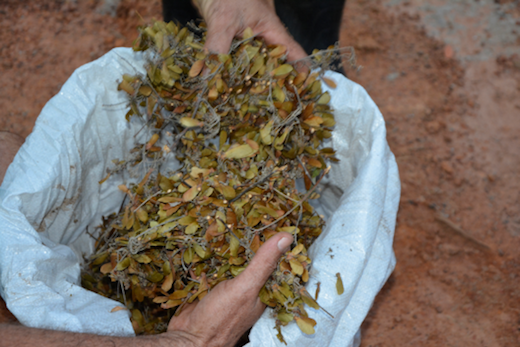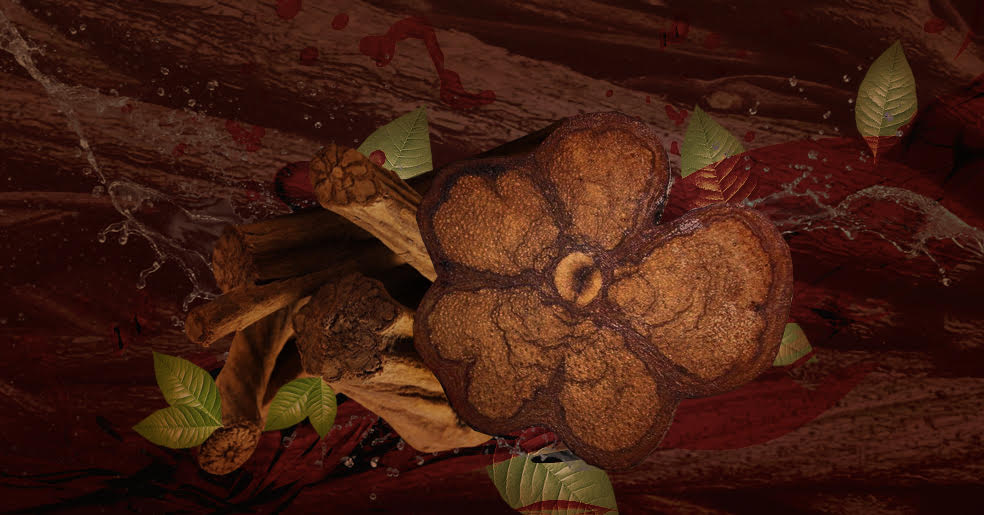- The Urgent Need to Review the Botanical Classification of the Ayahuasca Vine - September 27, 2018
- The Urgent Need to Review the Botanical Classification of the Ayahuasca Vine - September 27, 2018
- Rethinking Power, Plants, and the Future of Psychedelic Culture - May 9, 2025
- Where Is the Psychedelic Movement Headed Next? - October 15, 2024
- The FDA’s Rejection on MDMA-Assisted Therapy: What is Next for the Psychedelic Movement? - August 16, 2024
- The Urgent Need to Review the Botanical Classification of the Ayahuasca Vine - September 27, 2018
In contrast to the great amount of both scientific and popular literature that is available on a vast number of topics nowadays, there seems to be virtually no studies about the plant species itself
Currently, there is a huge boom of ayahuasca use throughout the globe. The brew seems to have reached all continents, and is now being consumed by celebrities and inserted into mainstream Northern culture; however, when we are talking about “ayahuasca,” what are we really talking about? To which plant species are we referring? In contrast to the great amount of both scientific and popular literature that is available on a vast number of topics nowadays, there seems to be virtually no studies about the plant species itself. And, at the end of the day, we do not know if we are even talking about the same thing! Not only do we know very little about this plant, but it’s existence may also be under threat. That is why an interdisciplinary team of researchers got together at the University of Brasília (UnB) in the capital of Brazil to study these matters. Brasília is also one of the main places in Brazil exemplifying the diversity of the use of ayahuasca.
Going back to the basics: as we all know or have heard, ayahuasca is made by adding the vine, Banisteriopsis caapi—known by many popular names; in Brazil, often as jagube and mariri —with leaves of the shrub Psychotria viridis species, from the coffee family of plants, called rainha (queen) and chacrona, among other names.
An important starting point to this discussion is the understanding of the divide between disciplines. For some time, anthropologists have drawn attention to the curious fact that botanists often consider the ayahuasca vine a single species, while traditional populations recognize it as various separate entities. Within the Brazilian ayahuasca religions, such as Santo Daime, the União do Vegetal (UDV), and the Barquinha, the vines are classified into different groupings; two of the main ones we identified are distinguished by the stem nodes being either inflated or non-inflated (Fig. 1;2, respectively). It’s important to point out that this distinction, contrary to what one might think, has not been noted by botanists in their herbarium specimens, because these samples usually have only branch apex. Therefore, we feel that this is a rather important observation, and the species taxonomy needs to be reassessed!


Banisteriopsis caapi is an Amazonian species that is hard to locate in the forest. To access a broad sampling, the idea of combining folk knowledge with formal science arose. That might be an obvious idea for researchers in the field of social sciences, but it has not always been the case historically with different plant species. For this purpose, we conducted fieldwork with subjects during their rituals in different ayahuasca communities (Fig. 3;4) and collected samples of the plants they used, which we then analyzed. Unfortunately, most indigenous knowledge has not yet been systematically recorded, or appears in remote and inaccessible ethnographies, and these findings and notes have not been compared and contrasted with existing botanical knowledge.


In sum, we argue here that taxonomic reassessment of groups and species is necessary as new scientific analysis tools become available
In sum, we argue here that taxonomic reassessment of groups and species is necessary as new scientific analysis tools become available. Considering that the last revision of the genus Banisteriopsis was done in 1982 by the North American researcher Bronwen E. Gates,1 who did not collect the species in the Amazon, the need to review the botanical classification of the species seems obvious. In addition, it is necessary to consider that the vine stem has not been analyzed, since samples of these stems are rarely available in the dried plant collections of the herbaria.
Informants interviewed acknowledged the existence of different “types” of vines and understood some of their distinctive morphological characters.
We are now obtaining data through interviews and guided collection of botanical material consisting of fragments of branches, preferably containing the leaves, flowers and fruits associated with a section of the stem (Fig. 5;6). In our fieldwork, we often found that members of the ayahuasca religions had a wide, consistent, and distinct knowledge of the vines used (there is much variation among the groups, and among different members in each group, but unfortunately, we are not able to address that level of detail here). Informants interviewed acknowledged the existence of different “types” of vines and understood some of their distinctive morphological characters. In addition, some of religious groups that we interviewed prefer some types of vine for their rituals, or have different criteria according to the nature of ceremony to be conducted.


According to subjects, leaf color; the arrangement of very small glands on the leaves and petioles bark color; the stem consistency, and the presence or absence of inflated nodes in them, as well as the color of the resulting beverage are important for distinguishing the type of vine (Fig. 7). Some people even recognize the morphological difference of the types of vines from their seedlings. The vine types are correlated with different properties of the respective resulting ayahuasca beverages.

We are using various approaches to study the traditional vine ethno-types, including the external morphology of stems, leaves, flowers, fruits and seedlings, stem and leaf anatomy, and chemical composition and phylogeny based on DNA fragment sequencing, which is where the genetic code of the species is stored. The samples are being deposited into the University of Brasília herbarium, where they are available for consultation.
The work is not yet conclusive, and the same type of vine may have different names between religious groups and different regions of northern Brazil. Among the group of vines with inflated nodes, some types are recognized as the caupuri, long node caupuri and pajezinho; however, there are groups that refer to “pajezinho” as “quebrador”, a vine with non-inflated nodes. Among the group with non-inflated nodes, we have: tucunacá, ourinho (gold), quebrador (breaker), roxinho (purple) and arara (macaw), for example. Interestingly, there are reports of hybridization between the extreme forms of inflated node vines with non-inflated ones.
Preliminary analysis shows that there are significant morphological and anatomical differences between inflated and non-inflated node vines, and analysis of their DNA sequences may provide data that will reinforce these differences, including helping to distinguish possible hybrids between species. The recognition of the diversity of “types,” or the variation of the vine, is more important than one might imagine; not only to recover the history and the dispersal routes of seeds and seedlings and their exchange between indigenous and mestizo peoples, but also for the conservation of the species.
The conservation of the diversity of vine types should be considered essential to maintain this important genetic resource.
The conservation of the diversity of vine types should be considered essential to maintain this important genetic resource. Ayahuasca vines need to exchange genes between genetically different individuals of the same species to maintain their vitality. Likewise, with animals, we cannot cross brother with sister, or parents with children because from a biological perspective the species will degenerate to extinction.
Thus, for the conservation of the vine, and consequently, the development of ayahuasca communities, culture and ceremonies, we must maintain this diversity of all forms. This goal may be difficult to achieve if there is no policy of maintaining all types, instead of only the most productive plants that are considered easier to beat into a pulp or that provoke more pleasant sensations when drinking the brew. The problem of overharvesting, including felling the trees on which the vine climbs, highlights the importance of preserving and cultivating the different vine types or species. In times of the global expansion of ayahuasca, it is more urgent than ever that we focus our attention on these topics. We hope, as we include comparative studies with indigenous populations and their ancestral knowledge, that our research can open the doors to a treasure of possibilities in the academic field of research on ayahuasca.
Acknowledgements
We would like to thank our work group (researchers and students attending master or doctorate courses) who helped us with different segments of this research: Dulce Maria Sucena Rocha, Sueli Maria Gomes, Marisa Toniolo Pozzobon, Renata Sebastiani, Eloisa Dutra Caldas, Beatriz Wernek Lopes Santos, Nívea Nagamine Pinheiro, and Thaís Aparecida Coelho dos Santos. We would like to express appreciation for the for the FAPDF Process nº 193000881/2015 for the grant that made this work possible.
References
- Gates, B. (1982). Banisteriopsis and Diplopterys (Malpighiaceae). Flora Neotropica Monograph No. 30. New York City, NY: The New York Botanical Garden Press ↩
Take a minute to browse our stock:
Did you enjoy reading this article?
Please support Chacruna's work by donating to us. We are an independent organization and we offer free education and advocacy for psychedelic plant medicines. We are a team of dedicated volunteers!
Can you help Chacruna advance cultural understanding around these substances?














